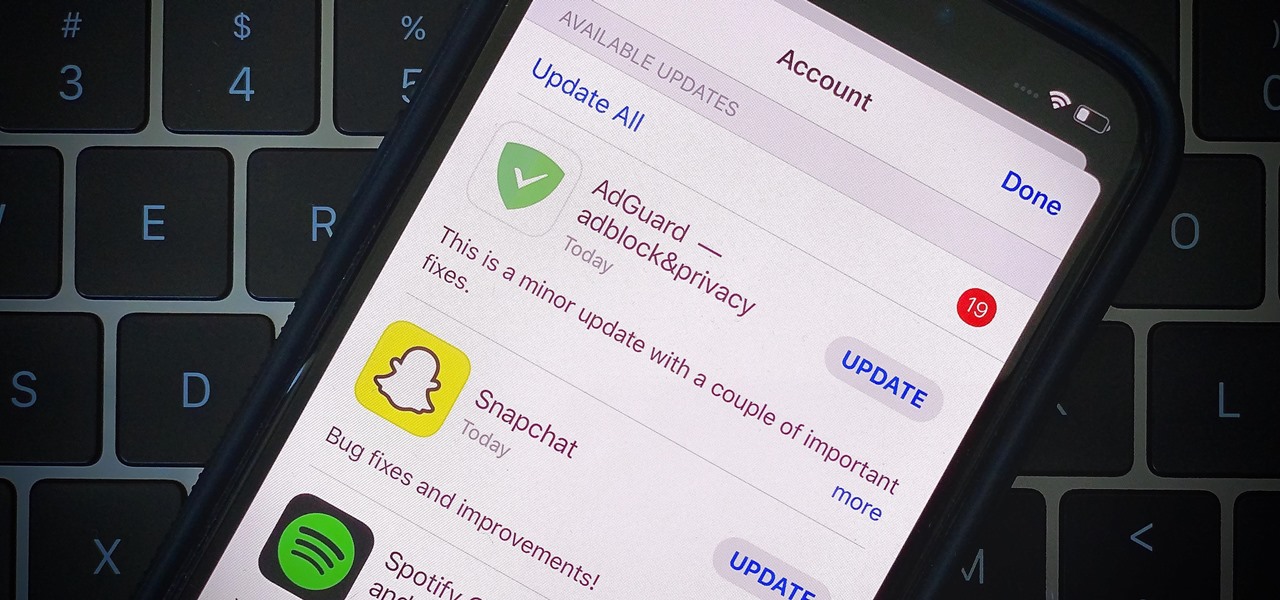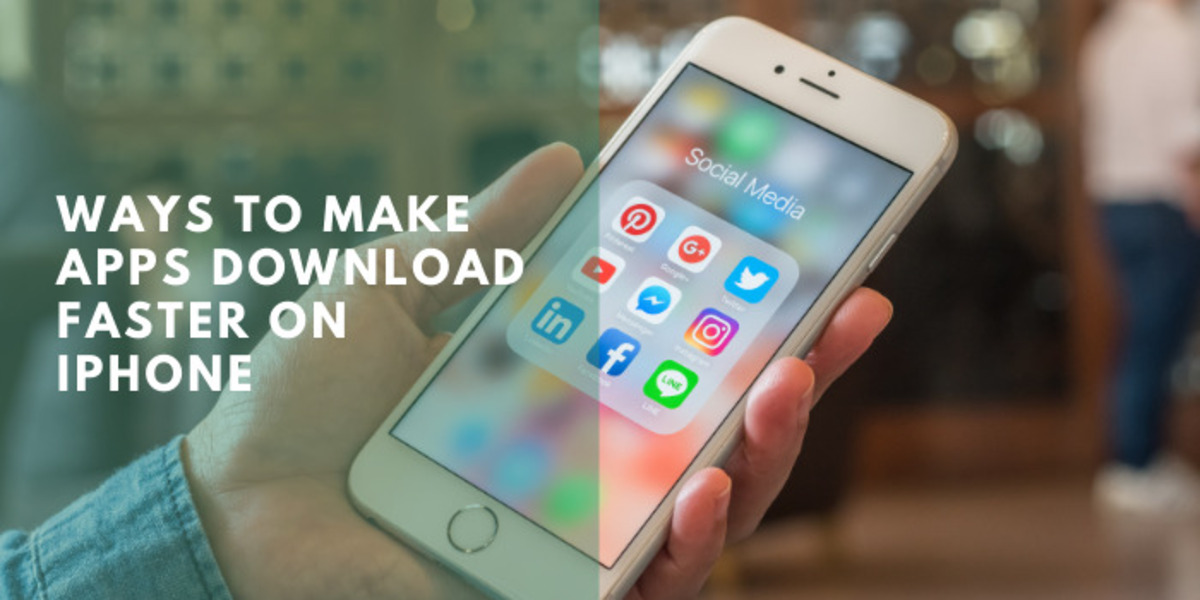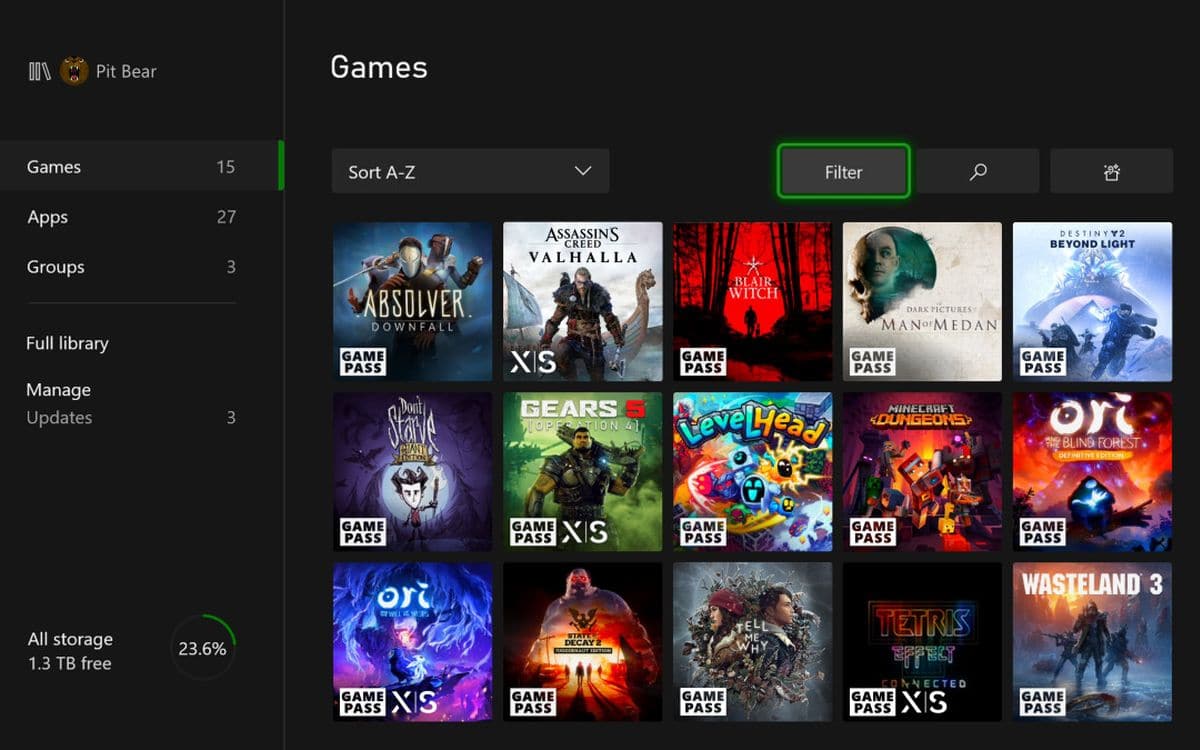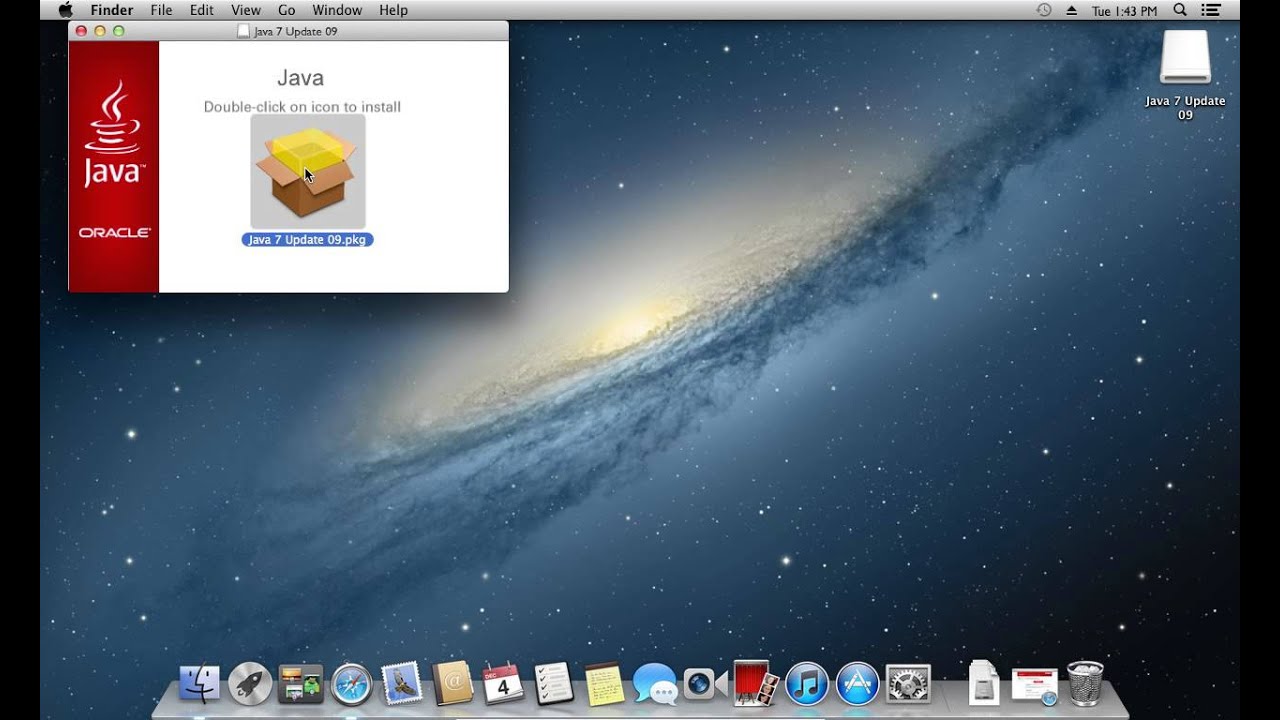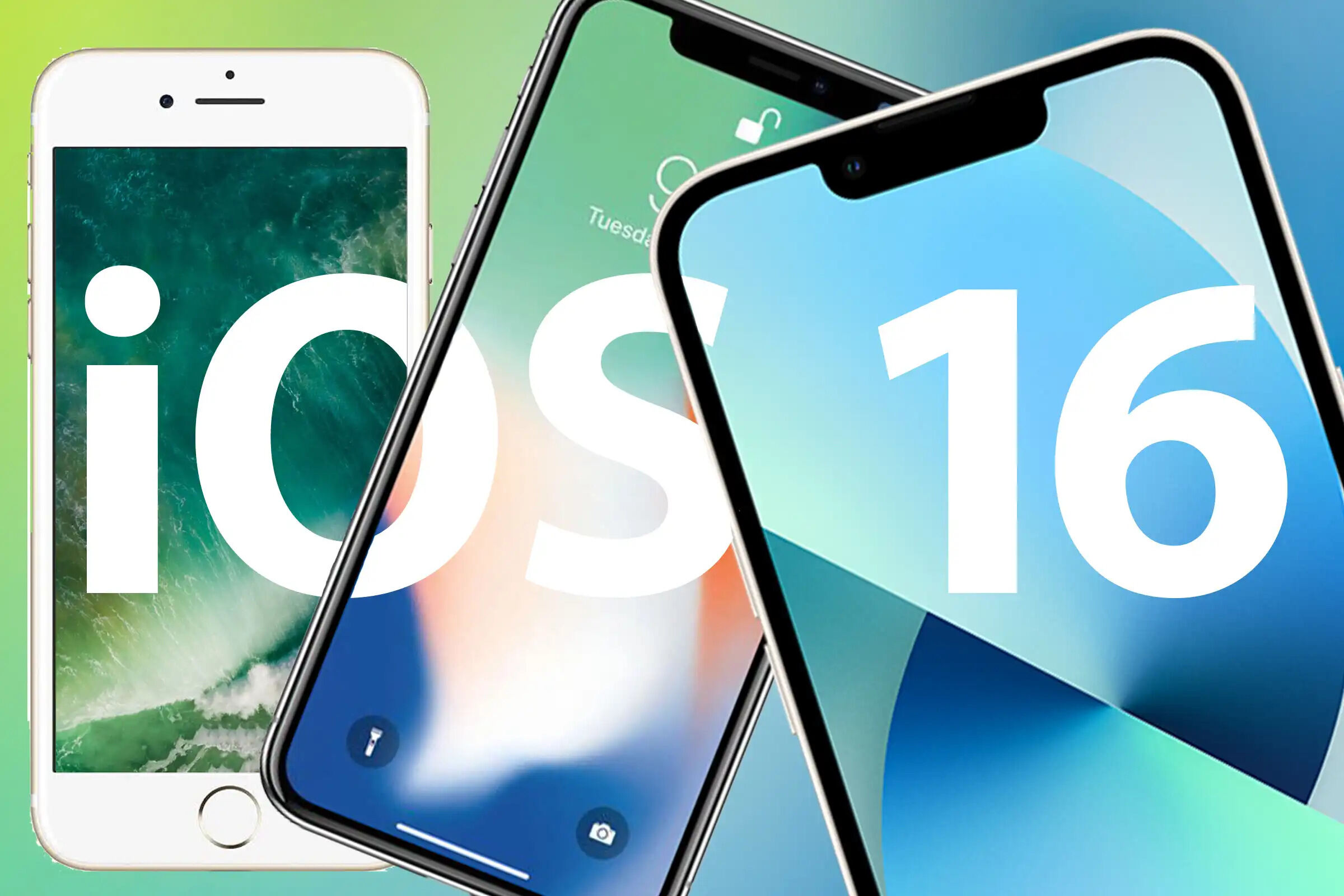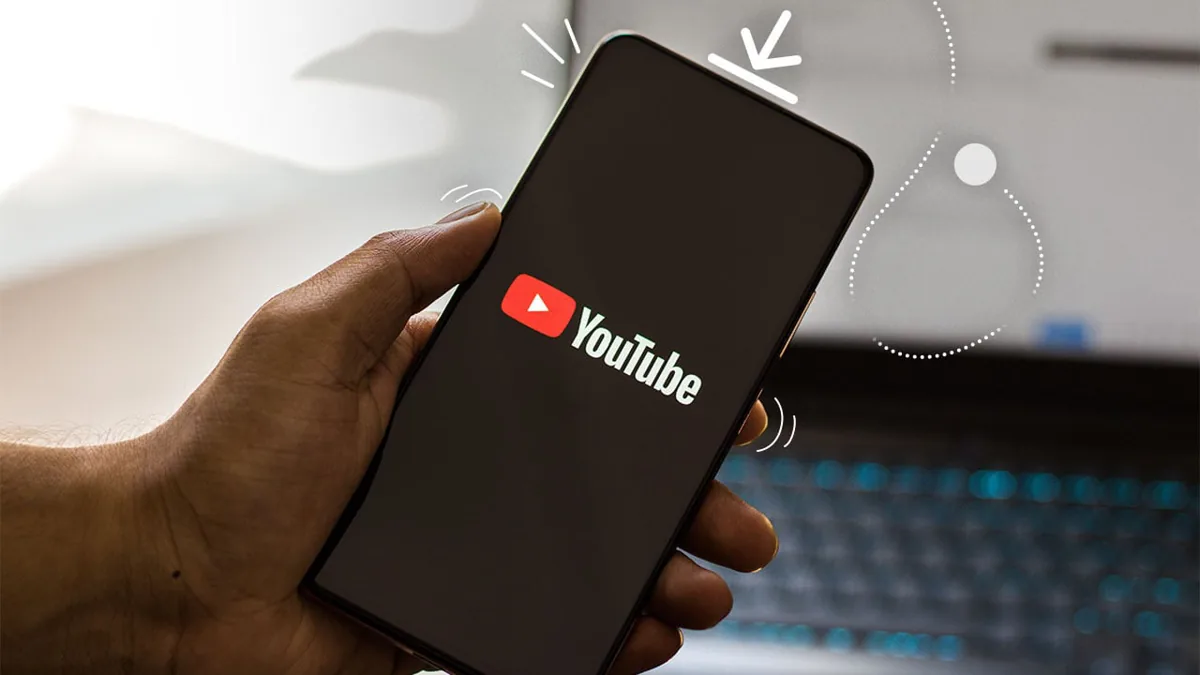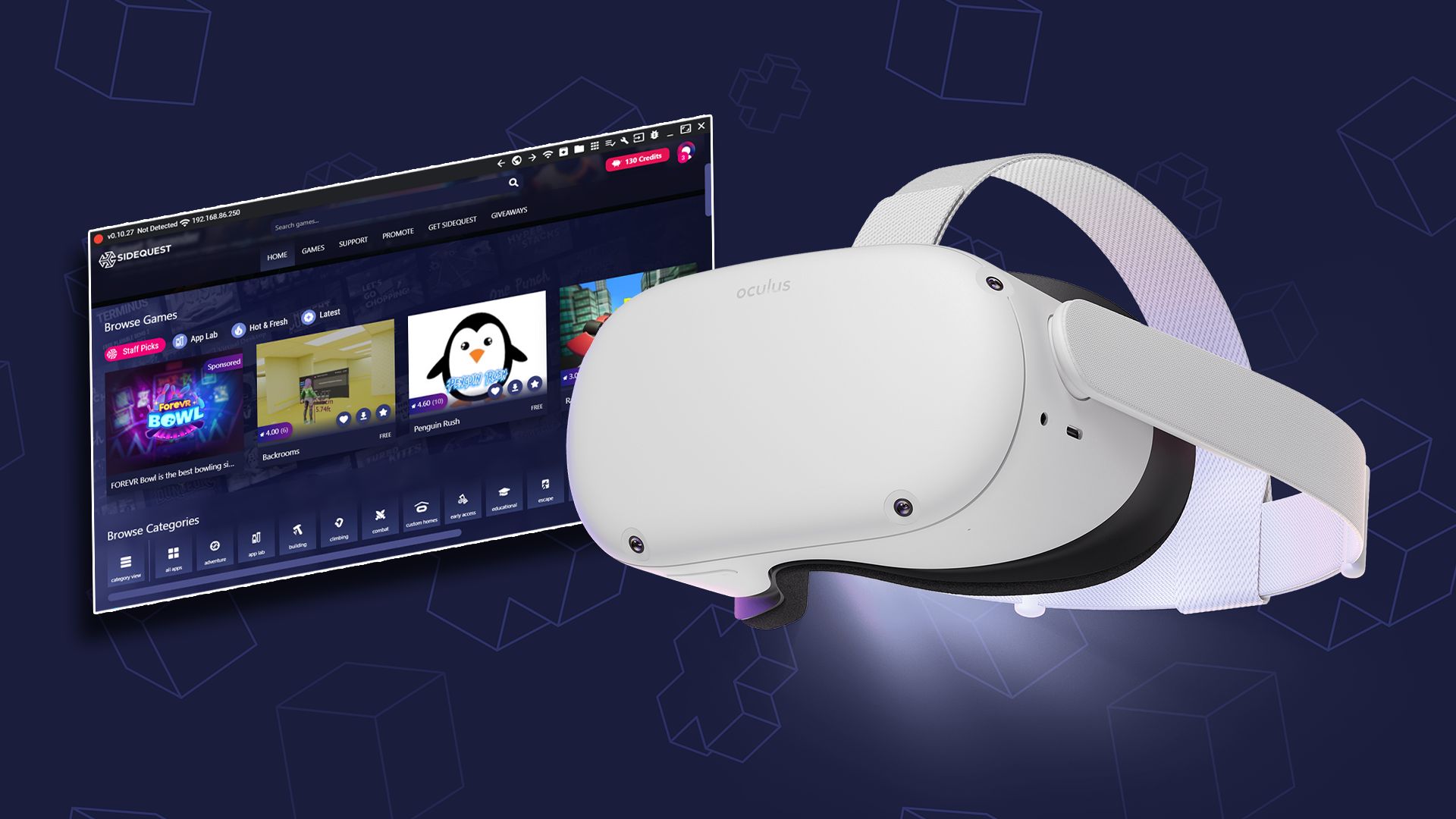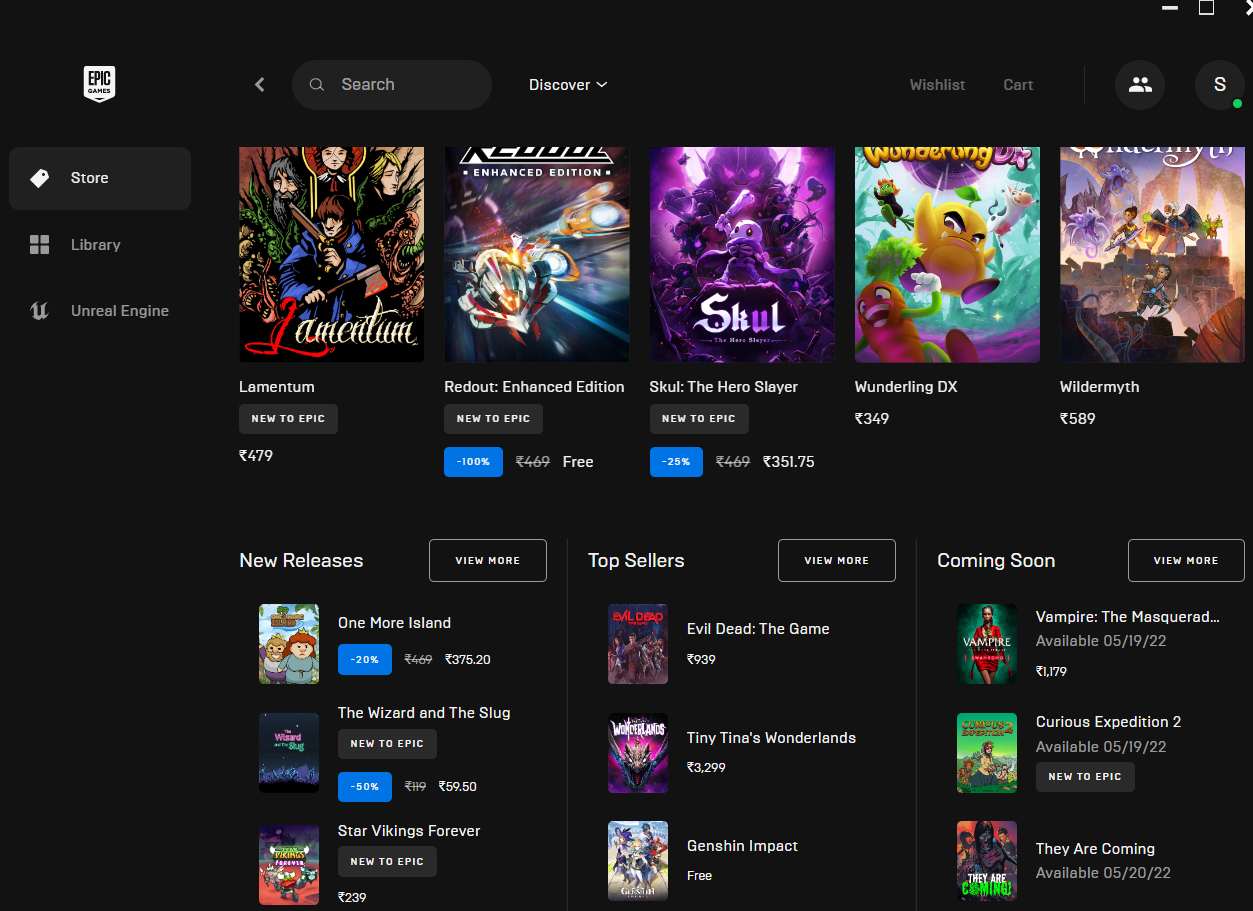Introduction
When it comes to downloading apps, speed is of the essence. Users expect quick and seamless downloads, and any lag or delay can significantly impact their experience and satisfaction. As an app developer or owner, it is crucial to prioritize optimizing the app download speed to ensure a positive user experience.
In this article, we will explore various strategies and techniques to make your app download faster. From optimizing the app size to implementing caching and utilizing progressive web apps, these techniques will help you deliver a smooth and efficient download process.
A faster app download not only enhances the user experience but also improves your app’s chances of being discovered and downloaded. Research shows that users are more likely to abandon an app download if it takes an excessive amount of time. By implementing these strategies, you can reduce download times, increase user engagement, and boost your app’s performance.
Whether you are developing a native app or a web app, these tips can be applied to improve download speeds. So, without further ado, let’s dive into the methods you can use to make your app download faster and provide your users with a seamless experience.
Optimize the App Size
One of the main factors that can impact app download speed is the size of your app. Larger app sizes take longer to download, especially on slower internet connections. Therefore, optimizing the size of your app can significantly improve download speeds and provide users with a faster and smoother experience.
To optimize the app size, start by identifying any unnecessary or redundant code, resources, or assets. Remove any unused libraries, images, or files that are not crucial for the app’s functionality. Additionally, consider compressing audio and video files without sacrificing quality. This will reduce the overall file size and improve download times.
Another effective strategy is to implement code splitting. With code splitting, you can divide your app’s codebase into smaller, manageable chunks. This allows users to download and install only the necessary parts of the app, reducing the overall download size and improving download speeds. This technique is particularly useful in larger apps with complex features and functionalities.
Furthermore, consider using modern compression algorithms to compress your app’s resources. Advanced compression techniques, such as Gzip compression, can significantly reduce the size of your app’s files without sacrificing quality. This reduces the amount of data that needs to be downloaded and speeds up the overall download process.
Lastly, consider utilizing asset bundles or on-demand resource delivery. With asset bundles, you can separate essential and non-essential app assets and download them separately. This approach allows users to start using the app before the entire download is complete, providing a faster and more interactive experience. On-demand resource delivery takes this concept further by downloading app resources as and when needed, further reducing the initial app download size.
Optimizing the app size not only improves download speeds but also helps conserve device storage space. Users are more likely to download and keep an app that doesn’t take up excessive space on their devices. By implementing these optimization techniques, you can ensure that your app remains lightweight, fast, and user-friendly.
Reduce the Number of Network Requests
Another factor that can impact app download speed is the number of network requests made during the download process. Each network request adds latency and can slow down the overall download time. Therefore, reducing the number of network requests can significantly improve app download speeds and enhance the user experience.
To reduce network requests, start by minifying and combining your app’s JavaScript and CSS files. Minification removes unnecessary characters and whitespace, while file combining reduces the number of separate requests made to the server. By bundling and compressing these files, you eliminate the need for multiple network requests, thereby speeding up the download process.
Additionally, consider utilizing HTTP/2 or HTTP/3 protocols. These newer protocols offer improved performance and efficiency by allowing multiple requests to be handled over a single connection. This reduces the latency caused by establishing multiple connections, resulting in faster download speeds.
Another effective strategy is to implement lazy loading or deferred loading of non-essential resources. Lazy loading delays the loading of images, scripts, or other resources until they are needed. This avoids unnecessary and upfront network requests, allowing the crucial content and functionality to be downloaded first.
Furthermore, make use of caching mechanisms to minimize the need for repetitive network requests. Utilize HTTP caching headers to instruct the browser to cache certain resources, such as static files or images. This allows subsequent visits to your app to load these resources from the cache instead of making new requests to the server, reducing the overall download time.
Lastly, consider utilizing a content delivery network (CDN). A CDN stores your app’s static files and serves them from servers located closer to the user, reducing the distance and latency involved in retrieving content. By leveraging a CDN, you can improve download speeds by delivering content from servers that are geographically closer to your users.
By reducing the number of network requests, you can ensure faster download speeds and an optimized user experience. Implement these strategies to minimize latency and improve the overall efficiency of your app’s download process.
Implement Caching
Caching is a powerful technique that can significantly improve app download speeds by reducing the need for repetitive requests to the server. By storing frequently accessed data locally on the device, caching allows users to retrieve content quickly without relying on network connectivity.
To implement caching, start by utilizing browser caching. By specifying appropriate caching headers in your app’s server responses, you can instruct the user’s browser to store and reuse certain resources, such as static files, images, and CSS, for a specific period. This reduces the need for repeated requests for the same resources, resulting in faster download speeds.
Additionally, consider implementing data caching in your app. This involves storing frequently accessed app data or API responses on the device’s local storage or in a persistent cache. By retrieving data from the cache instead of making network requests, you can significantly reduce the download time and improve the app’s responsiveness.
Furthermore, utilize caching libraries or frameworks specific to your app’s development platform. These libraries provide built-in caching mechanisms, making it easier to implement and manage caching within your app. They often offer features such as expiry policies, cache eviction strategies, and efficient storage mechanisms, further enhancing the caching process.
You can also consider using advanced caching strategies such as content-based caching, where content is cached based on its unique identifier or version, ensuring that only relevant and up-to-date content is retrieved. Another strategy is partial caching, where only specific parts of a web page or app screen are cached, reducing the amount of data that needs to be downloaded.
It is important to implement appropriate cache invalidation techniques to ensure that the cached data remains up-to-date. This can be achieved by setting cache expiry times, implementing cache invalidation mechanisms, or utilizing versioning for cache keys.
By implementing caching techniques, you can significantly enhance app download speeds and improve the overall user experience. Caching reduces the dependency on network connectivity, allowing users to access content quickly and efficiently, even in low or no network conditions.
Minimize Unnecessary Background Processes
Unnecessary background processes running during the app download can consume device resources and slow down the download speed. To optimize the app download process, it is essential to minimize or eliminate any non-essential background processes that may hinder the download speed.
Firstly, evaluate the background processes running in your app and determine if they are crucial for the download process. Identify any unnecessary tasks, such as analytics tracking or automatic updates, which can be deferred or disabled during the download. By reducing the load on the device’s CPU and network resources, you can allocate more processing power and bandwidth to the download, resulting in faster completion.
Consider implementing an effective task scheduler or job queue system to manage background processes. This allows you to prioritize essential tasks and delay non-essential processes during the download. By managing tasks efficiently, you avoid conflicts and bottlenecks that may hinder the app download speed.
Furthermore, optimize your app’s background synchronization settings. If your app syncs data in the background, consider implementing smart syncing techniques that minimize network usage and prioritize essential data updates. This ensures that data synchronization processes do not impede the app download speed.
Another critical aspect is to handle battery optimization properly. Excessive battery usage by background processes can slow down the system and impact the app download speed. Ensure that your app follows the recommended battery optimization guidelines for the targeted operating systems to minimize background process-related battery drain and maintain efficient download speeds.
The use of efficient multithreading techniques can also help speed up the app download process. By utilizing parallel processing and allocating different threads for different tasks, you can ensure that the download proceeds concurrently with other necessary background processes, mitigating any potential delays.
Remember to thoroughly test your app’s download performance under various scenarios, including low-power modes and poor network conditions. This will help you identify and address any potential issues that may affect the app download speed.
By minimizing unnecessary background processes, optimizing task scheduling, and implementing efficient synchronization techniques, you can ensure faster and smoother app downloads. Prioritizing essential processes and reducing resource consumption during the download process will enhance the user experience and increase user satisfaction.
Optimize Images
Images play a crucial role in enhancing the visual appeal of your app, but they can also significantly impact download speeds if not optimized properly. Optimizing images is essential to strike a balance between visual quality and download speed, providing users with a fast and visually pleasing experience.
Start by resizing and compressing images before including them in your app. Use image editing tools or online compressors to reduce the resolution and file size without compromising on visual quality. Consider using modern image formats such as WebP or JPEG 2000, which offer superior compression and optimization compared to traditional formats like JPEG or PNG.
Additionally, leverage lazy loading techniques for images. Load only the images that are currently visible to the user, and defer the loading of off-screen images until they come into view. By implementing lazy loading, you can reduce the initial download size and improve the perceived speed of your app.
Implementing responsive images is another effective strategy. Serve different image sizes based on the user’s device or screen resolution. This ensures that users download appropriately sized images, minimizing data usage and improving download speeds, especially on mobile networks.
Consider utilizing image CDNs or cloud storage solutions to host and serve your app’s images. These services offer fast and reliable content delivery, reducing latency and improving the overall download speed of images. Additionally, some CDNs automatically optimize images on the fly, further enhancing download speeds.
Implement caching headers specifically for images to enable browser caching. Set appropriate expiration times and cache-control headers to instruct the browser to cache the images. This reduces the need for repeated downloads and speeds up subsequent visits to your app.
Lastly, remember to use the latest image loading and rendering techniques provided by the app development platform. Many frameworks and libraries offer optimized image loading components, lazy loading modules, or image placeholders to improve performance and download speeds.
By optimizing images through resizing, compression, lazy loading, responsive design, and leveraging content delivery networks, you can significantly improve the download speed of your app. Providing users with visually appealing content without compromising on performance will result in a faster and more engaging experience for your users.
Compress Files and Data
Compressing files and data is an effective strategy to reduce download times and optimize the overall performance of your app. By reducing the size of files and data, you can improve download speeds and enhance the user experience.
Start by compressing your app’s JavaScript, CSS, and HTML files. Utilize minification techniques to remove unnecessary characters, comments, and whitespace, while preserving the functionality and structure of the code. Compressed files are smaller in size and can be downloaded faster, resulting in improved app download speeds.
Consider implementing gzip compression for your app’s server responses. Gzip is a widely supported compression format that compresses files on the server-side and decompresses them on the client-side. This significantly reduces the file size and download time, especially for text-based files such as HTML, CSS, and JavaScript.
Another approach is to utilize data compression techniques for transmitting and storing data. Depending on your app’s needs, you can implement compression algorithms such as zlib or brotli to compress data before transmission. This reduces the amount of data sent over the network, resulting in faster and more efficient downloads.
Implementing binary protocols for data exchange can also contribute to faster app downloads. Binary protocols use a compact binary representation instead of verbose text-based formats, minimizing the amount of data transferred and reducing download times. Protocols like Protocol Buffers or MessagePack offer efficient encoding and decoding mechanisms for improved performance.
Consider utilizing file compression for downloadable resources within your app. If your app offers downloadable files such as PDFs or media content, compress these files using formats like ZIP or RAR. Compressed files are smaller in size and can be downloaded faster, enhancing the overall user experience.
It is important to balance the compression level with the decompression time to ensure optimal performance. Be mindful of the devices and network conditions your app is targeting, as more compression may result in longer decompression times on lower-end devices.
By implementing file and data compression techniques, you can significantly improve app download speeds and enhance the overall user experience. Compressed files and data reduce the download size, resulting in faster transfers and quicker access to your app’s content.
Prioritize Content Loading
Prioritizing content loading is crucial to ensure that the most essential components of your app are downloaded and displayed to users as quickly as possible. By prioritizing the loading of critical content, you can provide a better user experience and reduce perceived wait times during the app download process.
Start by identifying the most important and necessary components of your app. This typically includes the core functionality, key features, and essential user interface elements. Prioritize the downloading and rendering of these components to ensure that users can start using the app as soon as possible.
Lazy loading is another effective technique to prioritize content loading. Lazy loading defers the download and rendering of non-essential components, such as images, videos, or additional sections, until after the essential content has been displayed. This approach allows users to engage with the critical content while the non-essential elements load in the background, improving perceived speed and usability.
Implement progressive rendering techniques for web apps. Progressive rendering ensures that the user sees meaningful content as early as possible. By breaking down large pages into smaller, progressively loading portions, you can display crucial information or interactive elements to users while the rest of the page continues to load in the background.
Consider utilizing skeleton screens or placeholders while waiting for content to load. Skeleton screens provide users with a visual indication that content is being loaded, reducing perceived wait times and keeping users engaged. Placeholders help maintain the structure and layout of the app, even before the actual content is loaded.
To enhance the perception of speed during the download process, consider utilizing loading animations or progress indicators. These visual cues communicate to users that the app is actively loading and provide reassurance that the content will be available soon. Loading animations also add an element of interactivity and engagement during the download.
Ensure that your app’s loading sequences and animations are optimized to minimize delays and deliver a smooth experience. Long, drawn-out loading sequences can frustrate users and contribute to high bounce rates. Aim for a balance between providing visual feedback and maintaining a swift download process.
Test your app’s content loading under different network conditions and devices to ensure consistent performance. Remember that the goal is not just to decrease actual download times, but also to enhance the perceived speed and usability of your app for a seamless user experience.
By prioritizing content loading, implementing lazy loading techniques, using progressive rendering, and providing visual cues and feedback, you can improve download speeds and keep users engaged during the app download process. Prioritizing the essential content ensures that users can quickly access and interact with the most important features of your app upon installation.
Use React Native Code Splitting
React Native code splitting is a technique that allows you to divide your app’s code into smaller, more manageable chunks. By splitting your app’s code, you can improve download speeds by only downloading the necessary code when it is needed, reducing the initial download size and improving the overall performance of your app.
When using React Native, you can leverage dynamic imports and code splitting libraries to split your app’s code into separate bundles. These bundles can be loaded asynchronously, meaning that they are fetched and executed only when required. This allows your app to prioritize and load the essential parts first, improving the overall download speed and user experience.
Consider identifying the different sections or features of your app that can be split into separate bundles. Splitting the code based on logical boundaries, such as screens, modules, or functionality, allows users to download and start using the app faster, while other sections load in the background.
Implementing code splitting in React Native can be done through various libraries, such as React Lazy Suspense, React Loadable, or React Router Lazy, depending on your specific requirements and preferences. These libraries provide a straightforward way to implement dynamic imports and code splitting in your React Native app.
Another advantage of code splitting is improved app performance. Smaller code bundles mean faster parsing and execution times, resulting in a snappier and more responsive app. By optimizing the loading sequence and only loading essential code upfront, you can provide a seamless user experience, even on slower network connections.
Keep in mind that while code splitting improves download speeds, it does introduce a slight delay when new code bundles need to be loaded. Consider implementing a loading indicator or placeholder to keep users engaged during the loading process and to provide a visual indication that additional code is being fetched.
Regularly monitor and analyze your app’s performance to ensure that code splitting is effectively improving the download speeds and user experience. Test your app on different devices and network conditions to ensure consistent performance and address any potential issues that may arise.
Code splitting is a powerful technique that enables faster and more efficient downloads for React Native apps. By dividing your app’s code into smaller bundles and loading them asynchronously, you can enhance download speeds, optimize app performance, and deliver a smoother and more responsive user experience.
Enable App Streaming
App streaming is a cutting-edge technology that allows users to start using an app almost instantly, without the need for a full download or installation. By enabling app streaming, you can provide users with immediate access to the core functionality of your app, greatly enhancing the user experience and reducing download times.
App streaming works by streaming the app’s UI and functionality from the server to the user’s device. Instead of downloading and installing the entire app, users can interact with the app through a streaming session. This allows them to access essential features and content without the wait typically associated with app downloads.
To enable app streaming, you will need to implement cloud-based infrastructure and use technologies like virtualization and remote rendering. Your app’s UI and functionality are hosted on the server and streamed to the user’s device, providing an interactive and responsive experience.
App streaming is particularly beneficial for larger apps or apps with complex features that would typically take longer to download. It allows users to experience the app firsthand, explore key features, and make informed decisions about whether to continue using and downloading the full app.
Implementing app streaming involves designing your app with a modular architecture and considering latency and network conditions. Dividing your app into smaller modules that can be streamed individually ensures that users get the most important features and content quickly, while the full app continues to load in the background.
It’s important to note that app streaming does have some limitations. Not all apps are suitable for streaming, especially those that rely heavily on device-specific functionalities or offline capabilities. Additionally, app streaming requires a stable internet connection and may not be suitable for users with limited data plans or in areas with poor network coverage.
To implement app streaming, you may need to work with cloud service providers or app streaming platforms that offer the necessary infrastructure and technologies. These providers offer solutions specifically designed for app streaming, allowing you to stream your app’s UI and functionality to users without the need for a full download.
Stay up to date with the latest advancements and developments in app streaming technology to ensure that your app takes full advantage of its benefits. Regularly monitor and optimize your app’s streaming performance to provide users with a seamless and satisfying streaming experience.
By enabling app streaming, you can significantly reduce app download times, increase user engagement, and provide immediate access to your app’s core functionality. This innovative approach to app delivery offers a time-efficient, seamless, and interactive user experience that can set your app apart from the competition.
Utilize Progressive Web Apps (PWAs)
Progressive Web Apps (PWAs) are web-based applications that combine the power of the web with the capabilities of native apps. By utilizing PWAs, you can improve app download speeds and provide users with a seamless and engaging experience across multiple devices and platforms.
PWAs offer several advantages when it comes to download speeds. Firstly, PWAs can be accessed directly through a web browser without the need for a traditional app store download and installation process. This eliminates the initial download time, allowing users to quickly access your app without any delays.
PWAs also leverage service workers and caching mechanisms to enable offline functionality. Once a PWA is initially loaded, it can be cached on the user’s device, allowing them to access the app even without an internet connection. This reduces dependency on network availability and further enhances the user experience by ensuring continuous access to content and functionality.
Additionally, PWAs can be designed with a focus on performance optimization. By implementing strategies like code splitting, image optimization, and lazy loading, you can reduce the initial load time of your PWA and improve download speeds. PWAs also benefit from progressive rendering, where content is rendered progressively, providing users with a smooth and interactive experience as elements load.
Another advantage of PWAs is their ability to be installed and used like native apps. Users can add a PWA to their home screen, giving it a dedicated app icon and instant access to the app. This app-like behavior enhances discoverability and encourages regular usage, without the need for traditional app store downloads and updates.
To utilize PWAs, you will need to develop your app using web technologies like HTML, CSS, and JavaScript. Taking advantage of frameworks like React, Angular, or Vue.js can simplify the development process and provide additional features and tools for building powerful PWAs.
Ensure that your PWA meets the requirements for being identified as a PWA by following the guidelines set by organizations like the Progressive Web App Checklist or the Web App Manifest specification. This includes providing a manifest file, implementing HTTPS, and offering responsive design capabilities.
Regularly test and optimize your PWA’s performance to ensure fast and reliable download speeds. Keep in mind that different devices and network conditions can affect the performance of your PWA, so it’s important to test across a range of environments.
By utilizing Progressive Web Apps, you can deliver fast app-like experiences without the need for traditional downloads and installations. PWAs offer improved download speeds, offline functionality, and enhanced user experiences, making them an excellent option for reaching a wider audience and providing a seamless app experience across various platforms and devices.
Conclusion
In today’s fast-paced digital landscape, optimizing app download speeds is crucial for providing a seamless user experience and increasing app adoption. By implementing the strategies discussed in this article, you can significantly improve app download speeds and enhance user satisfaction.
Optimizing the app size, reducing network requests, implementing caching, and compressing files and data are all critical steps in improving download speeds. Prioritizing content loading, using code splitting, enabling app streaming, and utilizing Progressive Web Apps (PWAs) are additional techniques that can enhance the user experience and make the app download process faster and more efficient.
Each of these strategies plays a unique role in enhancing app performance, and the optimal approach may vary depending on your app’s specific requirements and target audience. It’s important to evaluate your app’s needs, test different techniques, and monitor performance to find the best combination for your app.
Remember that download speed is just one aspect of delivering a successful app experience. It’s equally important to focus on other factors like usability, functionality, and overall performance to create a well-rounded app that meets user expectations.
By prioritizing optimization techniques, leveraging cutting-edge technologies, and continuously improving your app’s performance, you can deliver fast and efficient app downloads that capture the attention of users and drive engagement.
Keep in mind that the digital landscape is ever-evolving, and new techniques and technologies emerge regularly. Stay up to date with the latest advancements and trends in app development to ensure that you are incorporating the most effective strategies to make your app download faster.







